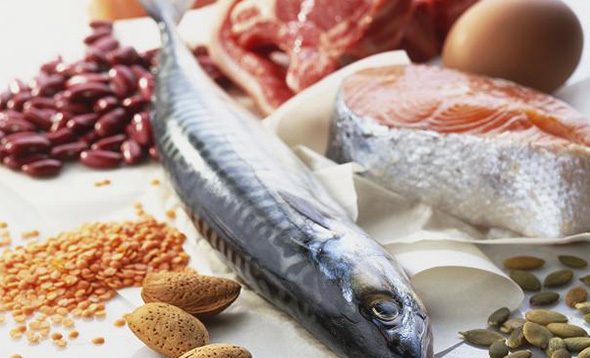That organic living is a conscious health choice
The Protein Basics
Understand the importance of meat and vegetable sources of protein as well as how much protein you actually need to maintain good health.
Proteins are the building blocks of life. They are fundamental to our daily diets as they help our bodies breakdown food, repair cells and make new ones, grow and perform many other bodily functions. The basic structure of protein is a chain of amino acids. Basically, during digestion the protein in the food we eat is broken down into amino acids. Our bodies need a number of amino acids to maintain good health.
It’s useful to note that there are three types of amino acids, namely essential amino acids that cannot be made by the body and must come from the food that we eat (they are histidine, isoleucine, leucine, lysine, methionine, phenylalanine, threonine, tryptophan, and valine); nonessential amino acids that our bodies can produce even if we can’t get them from food sources (these include alanine, asparagine, aspartic acid, and glutamic acid); and conditional amino acids that we need in times of illness and stress (including arginine, cysteine, glutamine, tyrosine, glycine, ornithine, proline, and serine). While you don’t need to have essential and nonessential amino acids at every meal, maintaining balanced consumption of them over the whole day is important.
Amino acids are found in animal sources such as meat, milk, fish, and eggs, as well as plant sources such as soy, beans, legumes, nuts and grains (whole, unrefined grains are better sources of protein). However, meat tends to contain saturated fats that impede the flow of nutrients. So opt for healthy meat protein sources such like turkey or chicken (with the skin removed), lean cuts of beef and pork, as well as fish and shellfish. Avoid processed meats. Low-fat dairy products are also excellent sources of protein. Great sources of plant-based proteins include beans and lentils, soy milk and tofu, nuts and nut butters (but be aware that nuts are high in fat), as well as seeds such as pumpkin, flax and hemp. Wholegrain breads and pastas, as well as grains like quinoa are also healthy options. In addition, vegetables such as peas, edamame (fresh soy beans), spinach, kale, Brussels sprouts, corn, broccoli, potato and artichoke are all high in protein. A key tip is to combine a range of plant-based proteins (such as beans with brown rice) to ensure that you’re getting the essential amino acids your body needs.
We generally tend to consume more protein than we need. So, it’s important to be mindful of the quantity and quality of protein we’re consuming. Two to three servings of protein-rich foods will meet the daily needs of most adults. Each serving need not be large. An ideal portion of cooked lean meat, poultry, or fish should be approximately the size of a deck of cards. And just half a cup of cooked beans will suffice. An egg, or two teaspoons of peanut butter will also deliver adequate levels of protein.
Nevertheless, some people do have special protein requirements. Children and teenagers may require different amounts of protein in their daily meals depending on their age. Expectant mothers need an additional 10 grams of protein, while breastfeeding women need 20 grams more. However, just a half-cup of cottage cheese will yield 10 grams of protein. Athletes will need more protein than a sedentary person. A marathoner will need 50 per cent more protein.
It’s most important to include a good balance of meat- and plant-based protein sources in your daily diet, but also ensure that you manage portion sizes. Bear in mind that not all proteins are made equal. Look for low fat, organic options and avoid processed foods for optimum health and well-being.


























_1672804154.jpg)

_1611290459.jpg)